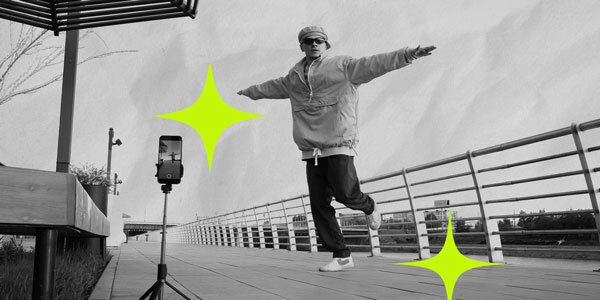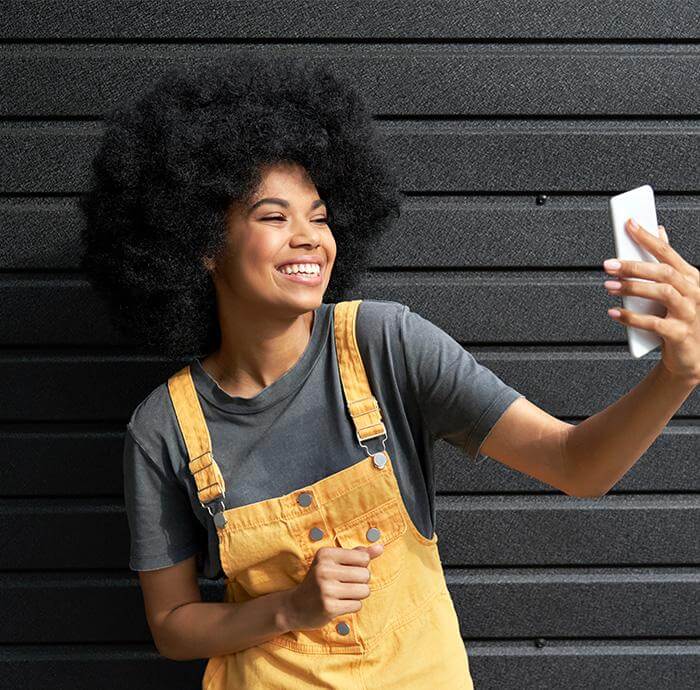

Breaking the Rules: Mastering the Art of Influencer Marketing on TikTok

TikTok is disrupting the influencer partnership marketing world—it’s a forever evolving space that doesn’t have written rules for success or optimization. As a form of social media, TikTok encourages uniqueness and promotes authentic content, which creates a tricky landscape for influencer marketers. Brands want to be seen on TikTok, but the tactics that work on other platforms (such as consistency and fully aligned content), will not perform as well on TikTok. In this blog, learn why you should toss out the old influencer marketing rule book and create tailored strategies to help your brand prosper on TikTok.
What sets TikTok apart from other platforms
When the pandemic hit in 2020, TikTok was very much a new platform, despite originally launching in 2017. It wasn’t well known or regularly being used. However, in the last two years it has almost consistently been the most downloaded app quarter-over-quarter, rivaled only by Zoom and Instagram.
TikTok homes in on personalization, and while other social media apps will give you suggestions for new accounts to follow, the majority of your feed activity comes from friends/family and their interactions.
In contrast, TikTok creates a unique experience where every time an individual opens up the app, a selection of videos accumulates based on data that matches the viewer’s personal preference. This is all based on an algorithm.
Understanding how to navigate TikTok’s algorithm and common misconceptions will help your brand put in place an influencer marketing strategy that will reach this platform’s lucrative audience.
TikTok marketing concepts you need to know
One misconception with TikTok is that it’s an easy platform to crack or essentially be “turned on” from a brand perspective, but there’s a lot more to it than just posting videos.
Below are three key elements of TikTok you need to know if you want a successful influencer program:
1. TikTok’s algorithm is not as mysterious as it might seem
Despite originally being a secret, the TikTok algorithm has since been defined and understood, and one thing is clear—their algorithm is one-of-a-kind. While there is an element of mystery within the platform, the process behind it is relatively simple.
Videos are classified into categories based on:
- Music/audio
- Descriptions and hashtags used
- Account settings (e.g., language, country, device being used)
The platform is consistently learning and reviewing user interactions to create an idea of what users like and don’t like based on their engagement with content. Actions, such as likes, shares, comments, and following all have an impact on what is shown on your “For You” page. However, above all else, your completion ratio is monitored, measuring how much time you spend watching a particular video and the percentage in which you have completed watching it.
As of 2023, TikTok extended the time limit on videos from 3 minutes to 10 minutes, with the optimal video length being 21-34 seconds. The algorithm utilizes user watch time, as well as the other interactions with content to figure out who likes the content and which other accounts it would be suited to, which in turn can very quickly create trends.
According to Shutterstock, the sweet spot is 1 like for every 10 views; this triggers the algorithm to show the video to more people as it is being enjoyed. Ads on TikTok are outperforming digital and TV marketing by 15-20% on metrics including enjoyment and persuasion, making them more effective forms of direct-to-consumer communication. The more a video is liked, the more it will be shown, therefore virality can be both random and difficult to achieve due to natural, personal preferences.
2. Introducing the TikTok “creator”
The growth of TikTok has also encouraged the development of a new wave of influencers who are essentially normal people using TikTok as a platform to create whatever content they like and have grown a significant following and community through authenticity – these types of influencers are defined as “creators.”
With the platform encouraging creativity, there are no misconceptions and users have the freedom to be whoever they want to be and produce whatever they want to produce (within the guidelines).
However, it’s not easy to get content in front of people, and it’s unlikely that creators will receive the same viewership across every video they create. Due to the algorithm, you don’t need to follow someone to see their content, despite being a positive for virality, it can implicate individual creator success from fluctuating engagement. The main route to TikTok engagement as a creator is consistency with posting, authenticity and natural self-expression.
The TikTok creator marketplace has also been developed to support creator discovery and find highly aligned content creators who can drive results desired by brands.
3. TikTok is NOT just another social media platform
In many ways TikTok is similar to other social media platforms, but the level of which TikTok not only interacts with the viewer, but thinks like viewers to actively improve their experience through tailored content is above and beyond.
From an agency, brand or influencer marketing perspective, TikTok deserves its own strategy. Brands often misuse this platform by replicating campaign videos that do not connect with the audience and consequently underperform. Creating a unique and personalized experience requires a unique and personalized approach, and although the platform does host videos, many influencer marketers would agree that there is a difference between a video and a TikTok.
The more robotic, scripted or branded the content, the worse it connects and engages with its viewers, leading it to become deprioritized by the algorithm.
Identifying the best TikTok metrics
The best way to utilize TikTok from an agency and brand perspective is still fairly unknown, as the app is still very much an upper-funnel method of marketing.
Commercialization is increasing through paid ads, TikTok shop and Linktree bios, but there isn’t a solid process for mainstream marketing, and it certainly wouldn’t be considered that easy to track. However, the impact TikTok can have on a brand can indirectly have a much higher success rate than other performance marketing tools.
TikTok should predominantly be used as a tool for brand awareness of product launches and discovery; the more viewers engage with your content, the more your video will be shown and increase your chance of virality or creating a trend of consumerism.
The below metrics are the best ways to view TikTok performance:
- Views
- Likes
- Comments
- Shares
- Saves
In most cases, the product being promoted is best to be used as product placement, rather than being centric to the video, so viewers don’t see it as an ad and don’t get interrupted from scrolling. Comedic sketches, day in the life, or GRWM (get ready with me) videos are examples of ways to include a brand’s product without detracting focus.
It’s better to subconsciously make audiences aware of your product and blend in with content, rather than interrupt a user when viewing. This will subsequently increase their desire to potentially purchase it days, weeks or months later.
Although the impact is difficult to measure with no tracking necessarily involved, the demand for products seen on TikTok is difficult to ignore as it becomes the fastest-growing channel for discovery—providing real-world, e-commerce opportunities for direct-to-consumer brands. It’s clear the growth of TikTok isn’t slowing down any time soon.
How to leverage TikTok as an influencer marketing tool
The short and simple way to leverage the platform as an influencer marketing tool is to use it as an extra part of your marketing mix. It’s a fun but important channel to show your brand’s personality, get creative and reach new audiences. Overcomplicating and over analyzing the content doesn’t complement the platform’s very nature for uniqueness.
Below are some ways to implement TikTok as an influencer marketing tool:
- Understand why you are using it and foresee the impact you want to have – how do you want consumers to view your brand? Does your content align with your influencer goals?
- Use emerging trends to your advantage, such as sounds, dances, hashtags etc.
- Target your market using audience intelligence.
- Allow your TikTok creator partners to have full freedom – they are the platform, and they are more than familiar with how to deliver results. Identify the right creators based on growth tactics and expectations.
- Create TikToks—not traditional marketing videos. Don’t be the brand that interrupts the feed/viewer experience.
If you’re wanting to strategically acquire influencer partners (be they TikTokers, Instagrammers, or YouTubers) for your brand to target the right audiences and generate quality leads, revenue and more, you need a top-notch agency partner.
Through AP Influence, Acceleration Partners addresses every facet of influencer partnership marketing and implements precise processes to demonstrate our strategy’s effectiveness, while helping you track measurable outcomes for your influencer partnership marketing program.
Ready to grow and scale your influencer partnership marketing program? Let’s connect!
By: Megan Rolfe









